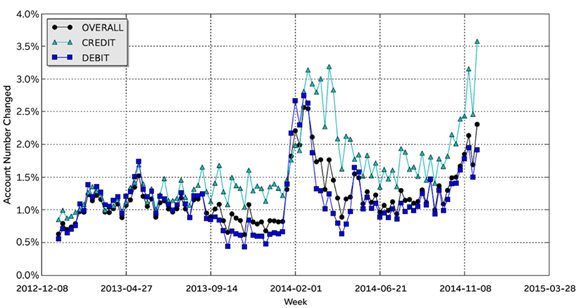Companies with recurring customers are commanding higher valuations because investors can more accurately forecast growth and trajectory of the business, making them better bets.
Customer retention is therefore critical for businesses that rely on a recurring revenue model. Customer lifetime value (LTV) must exceed cost to acquire a customer (CAC) by delivering maximum value with minimal friction.
A major source of friction is involuntary churn: Customers who want your product, but fail – inadvertently – to pay for it.
Recent technological developments in eCommerce payments make it possible to turn payments into a strategic revenue driver, rather than a cost center.
How is this accomplished?
Seamless integration of a recurring billing scheduler, an automated recycling system, and a card account updating solution can conservatively deliver an additional two-to-four percent gross annual revenue increase to your bottom line.
A recurring billing scheduler automatically processes your subscriber payments according to their plans. If the scheduler fails, you don’t get paid. Like payments acceptance, it must be rock-solid reliable with 99.99 percent uptime and clear response messages. A clean and well-documented API will ensure speedy integration, QA testing, and problem solving. Reporting must provide key performance indicators (KPIs) that reveal threats to revenue, such as high chargebacks, avoidable compliance fees, and excessive interchange.
Beyond payments, a recurring billing system should be able to handle one-time and recurring offers, flexibly apply discounts and order additions, as well as provide data necessary to manage customer relationships.
Recycling, or resubmitting declined transactions to achieve an approval, is essential for minimizing churn and extending customer lifetime value. Between 20-30 percent of declines can turn into approvals with effective recycling. Put simply, if you aren’t recycling, you’re leaving revenue on the table. There are a variety of recycling rules you can implement: every other day, every Friday, or every other week, for example.
Aside from the dreaded "Insufficient Funds" decline response, expired cards or invalid account numbers are two of the biggest contributors to declined authorizations. Account numbers are invalid for many reasons: card theft forces banks to reissue cards to consumers, issuing banks sell their card portfolio to a different card brand, or customers simply lose their payment card. Expired cards are also a constant headache for recurring billing merchants, especially those whose offers create customer relationships with a year or more between renewals.
Next up, how important is effective account updating to you? Let’s examine the impacts of just two widely publicized major retail breaches.
The above chart shows the number of "account number changed" responses from account updating over an almost 24-month period. "Account number changed" is one of many possible responses, and is the most impactful from a revenue standpoint because it immediately solves the problem of an "Invalid Account Number" decline.
Those huge spikes in "account number changed" responses would result in declines for merchants without an account updating solution. Each of these breaches involved about 50 million cards. The impact of EMV (chip-and-pin) later this year in the U.S. will be even more severe, as more than 500 million cards are expected to be issued with the new chips by October 2015.
Recurring Revenue is a Game-Changer
Venture capitalists have plowed close to one billion dollars into subscription retail in the past five years, with more to come. Your subscription business model may already be ahead of the curve, but to defend your market share, you’ll need to make certain nothing interrupts the value you deliver to your customers.
Your revenue forecast and market valuation both depend on it.

The above chart shows the number of "account number changed" responses from account updating over an almost 24-month period. "Account number changed" is one of many possible responses, and is the most impactful from a revenue standpoint because it immediately solves the problem of an "Invalid Account Number" decline.
Those huge spikes in "account number changed" responses would result in declines for merchants without an account updating solution. Each of these breaches involved about 50 million cards. The impact of EMV (chip-and-pin) later this year in the U.S. will be even more severe, as more than 500 million cards are expected to be issued with the new chips by October 2015.
Recurring Revenue is a Game-Changer
Venture capitalists have plowed close to one billion dollars into subscription retail in the past five years, with more to come. Your subscription business model may already be ahead of the curve, but to defend your market share, you’ll need to make certain nothing interrupts the value you deliver to your customers.
Your revenue forecast and market valuation both depend on it.
Bring your customers back, and exponentially increase your business.